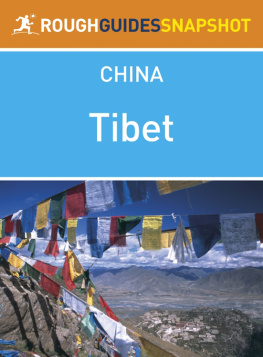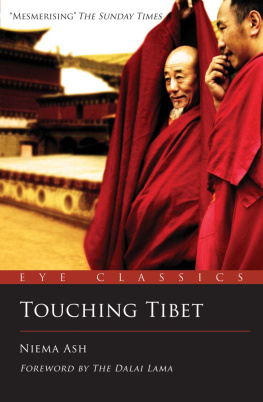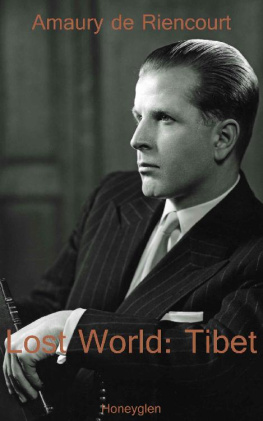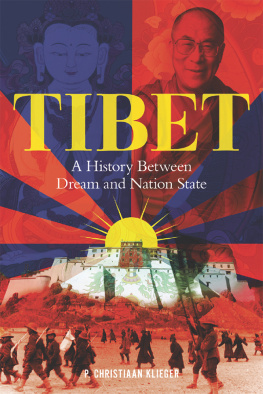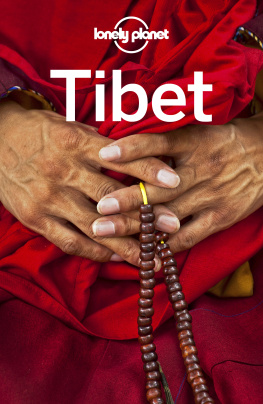ROUTLEDGE LIBRARY EDITIONS: TIBET
Volume 3
BUDDHISTS AND GLACIERS OF WESTERN TIBET
BUDDHISTS AND GLACIERS OF WESTERN TIBET
GIOTTO DAINELLI
First published in 1933 by Kegan Paul, Trench, Trubner & Co., Ltd.
This edition first published in 2019
by Routledge
2 Park Square, Milton Park, Abingdon, Oxon OX14 4RN
and by Routledge
711 Third Avenue, New York, NY 10017
Routledge is an imprint of the Taylor & Francis Group, an informa business
1933 Kegan Paul, Trench, Trubner & Co., Ltd.
All rights reserved. No part of this book may be reprinted or reproduced or utilised in any form or by any electronic, mechanical, or other means, now known or hereafter invented, including photocopying and recording, or in any information storage or retrieval system, without permission in writing from the publishers.
Trademark notice: Product or corporate names may be trademarks or registered trademarks, and are used only for identification and explanation without intent to infringe.
British Library Cataloguing in Publication Data
A catalogue record for this book is available from the British Library
ISBN: 978-1-138-32747-4 (Set)
ISBN: 978-0-429-44145-5 (Set) (ebk)
ISBN: 978-1-138-33451-9 (Volume 3) (hbk)
ISBN: 978-0-429-44526-2 (Volume 3) (ebk)
Publishers Note
The publisher has gone to great lengths to ensure the quality of this reprint but points out that some imperfections in the original copies may be apparent.
Disclaimer
The publisher has made every effort to trace copyright holders and would welcome correspondence from those they have been unable to trace.
BUDDHISTS AND GLACIERS OF WESTERN TIBET
BY
GIOTTO DAINELLI
WITH 32 PLATES AND MAP
Translated from the Italian by
ANGUS DAVIDSON
Printed in Great Britain by Butler & Tanner Ltd., Frome and London
PUBLISHERS NOTE
I N the original Italian version of this book the author expresses his views upon the very vexed question of the transliteration of Tibetan and Turki words. He finds the existing system, or lack of system, so confusing and misleading that he has elaborated a transcription of his own. I proceeded to a minute inquiry, he says, assembling the most important local authorities in every village and every valley, and evolved an Italian transcription which should come as near as possible to the native pronunciation most generally in use. Thus I was able to make some interesting corrections of errors which I will explain more in detail. The most typical is perhaps the one relative to the .name of the village at which we arrived during our difficult and agitating descent from the Zoji-la, Everyone has always called it, and continues to call it, by the name of Pandras, as did also the Italian expedition previous to mine. Since there is another and larger village a little way down the valley, which is called Dras, many travellers have supposed that the name Pandras obviously has some reference to the nearest large village; some of them have even tried to prove that the syllable pan is derived from a root of some Indian language or other, meaning below. Thus Below-Dras. But the trouble is that it is a question of a village which is not below, but above Drasapart from the unreasonableness of discovering a root of Indian origin in a region where the language is Tibetan. The truth is much simpler: it is not Pandras, but Prandas. Das in Tibetan means little plateau, like the one at the foot of the village on top of some rocks; and pran, also in Tibetan, is the name of a particular grass which grows there in great quantities.
Unfortunately, though naturally, his transcription was made for Italian readers and this book will be read by many who are not acquainted with Italian. Such a transcription would be entirely useless to them. The publishers, therefore, have given the generally accepted transcriptions of Tibetan and Turki names as recognized by the Royal Geographical Society and the Survey of India. Where it has been impossible to trace place-names mentioned by the author, an Anglicized version of Professor Dainellis Italian transcription has been given.
LIST OF ILLUSTRATIONS
My Base Camp on the Siachen
Map
T HIS is a faithful diary, written on the spot, but not meticulous to the point of recording pedantically the things I did and the things that happened to me day by day, of my recent expedition to Western Tibet.
It was a journey I had thought over and longed to make for many years, and which I organized and arranged in advance right from Italy to its distant goalthe heart of the Karakoram with such rapidity of movement that I may be permitted to say that, from the point of view of speed, it could not be surpassed. But this, more than anything else, was the natural result of past experience.



